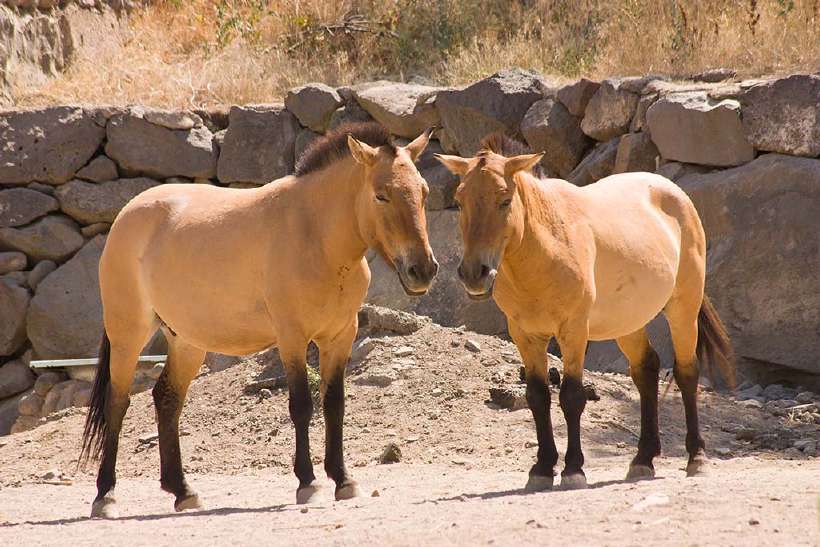How did the Modern Horse Originate?
Home / Science for Kids / 5Ws & H For Kids / How did the Modern Horse Originate?
Many millions of years ago a fox-like animal roamed across the plains of what is now the American continent. At that time the continents were not even divided as they are today.
This animal had four soft toes on its feet like a cat or dog. This animal came to be called the ‘eohippus’ by modern day scientists who discovered skeletal fossils of this specie.

The skeletal remains of this animal had many things in common with the skeletal structure of the modern horse, especially in the structure and distribution of its teeth. That is why scientists concluded that the eohippus is the ancestor of the modern horse even though the two don’t even look alike.
Why did the eohippus change? In nature, animals develop according to the environment. If they had plenty to eat they increased in size. If they had to depend on speed, their leg muscles became strong. They changed colour to provide them with a natural disguise.
The eohippus was a grass eater. It did not have fangs to protect itself or a hard shell like a turtle in which to hide. To escape the larger meat eaters the eohippus needed to run fast. Since it could run faster on tiptoe its outside toes were not used and became useless.
Gradually the outer toes disappeared and the middle toes developed. This process of change is called mutation. After millions of years, the eohippus changed through various changes (otohippus, mesohippus, merychippus) so much that it was called ‘pliohippus’ – the first of the prehistoric horse. The pliohippus was still small but it had developed its centre toe with a thick horny nail.
A million years ago, the first horse developed that resembled the modern horse. This was named ‘equus’. The equus lived in America at first, moving slowly southward. From here it shifted to Asia, Africa and Europe.
From this equus four main types of horses developed, each with mane and tail and a hard hoof. In Asia, it divided itself into two types – the tarpan and Przhevalski’s horse. Both are strong sturdy animals that still look exactly as they did a million years ago.
The tarpan is a stocky mouse-coloured horse with short legs, a large head with a shaggy coat against the cold. The Przhevalski’s horse (named after the Russian discoverer) or the ‘horse of the steppes’ is also short (four feet tall) and stocky.

The tarpan is still very untameable and wild and both types inhabit the steppes of Russia and China, Mongolia, and the Altai mountains of central Asia.
In Europe, the climate is milder than the cold barren plains of Mongolia and here developed the Equus robustus or ‘Great Horse’. This was a big strong horse that looked like the draught horses of today, the same breed that knights used to ride on with their heavy armour.
In Africa and in Central Asia developed a faster moving horse and because of its agility it was called Equus agilis. From this type came the Arabian and Greek strains of horses. This was a lighter, taller, and swifter horse than the rest.
Like the oxen, goat, dog, cat and other animals which man tamed and domesticated, early man found the horse very useful and he thus domesticated it.
Through selective breeding, man developed different breeds of horses for different purposes, like racing, breeding, pulling carts, and so on.
The very word ‘equus’ comes from the Greek word ‘acer’ meaning ‘quick’ or ‘swift’. Coincidentally, both the Mesopotamians (modern day Iraq) and ancient Indias (about three thousand five hundred years ago) called this animal – ‘asva’, meaning swift – from the Sanskrit word for horse!
626 words |
6 minutes
Readability:
Grade 8 (13-14 year old children)
Based on Flesch–Kincaid readability scores
Filed under: 5ws and h
Tags: #horses
You may also be interested in these:
Where Did Chess Originate?
Why is a Hippopotamus called a River Horse?
What Kind of Horses did Knights Ride?
The 'Groom'ed Horse
Escape to Freedom